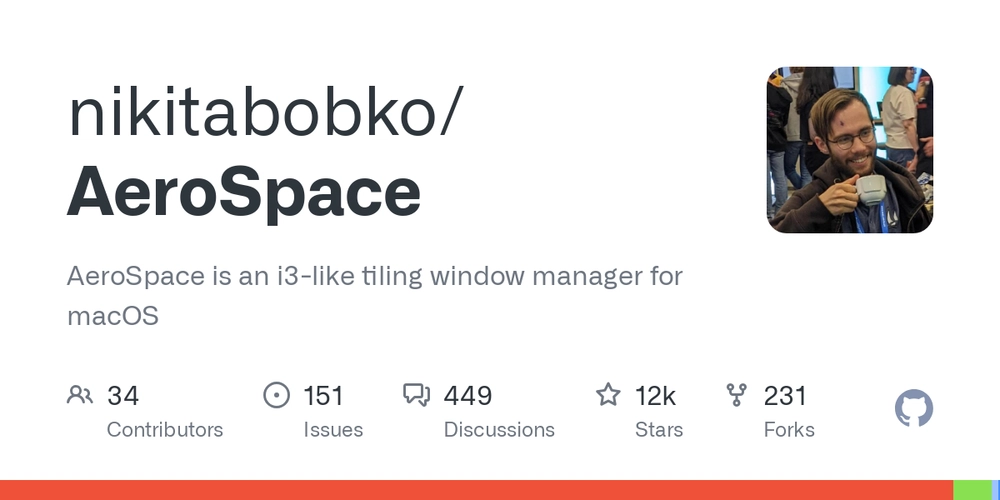Exploring Cisco's Innovations: Open Source Networking and Blockchain Security
Abstract: Cisco is at the forefront of technology with its forward-thinking approach to open source networking and blockchain security. This post details Cisco’s major contributions, examines the core concepts and real-world applications, and discusses the challenges and future outlook in these inter-related fields. With a focus on transparency, collaboration, and security, Cisco’s initiatives are not only revolutionizing network infrastructures but are also redefining the digital security landscape for enterprises worldwide. Introduction In today’s rapidly changing digital environment, traditional networking and centralized security approaches are being disrupted by innovations rooted in open source and blockchain technologies. Cisco—the global leader in networking solutions—is embracing these trends and spearheading a transformation that integrates open source networking frameworks with blockchain-based security measures. This synergy is not only redefining network robustness but is also enabling scalable, transparent, and secure digital ecosystems. In this post, we dive deep into Cisco’s commitment to open source innovation and blockchain security, exploring the technology’s origins, current use cases, and potential future impact. For the original article on these topics, please check our Original Article. Background and Context The evolution of networking and security strategies has witnessed a significant shift over the past two decades. Traditional proprietary systems, which once dominated the industry, are now giving way to open source models and distributed ledger technologies like blockchain. Open Source Networking: A Brief History Open source networking refers to the practice of deploying network infrastructures that use publicly accessible code. This approach offers: Enhanced Innovation: Developers worldwide collaborate, resulting in rapid advancement and creative solutions. Interoperability: Open standards facilitate seamless integration among various systems. Cost-effectiveness: Reduced licensing fees make it more accessible to businesses of all sizes. Security: Continuous community-driven audits help identify and mitigate vulnerabilities swiftly. Cisco’s involvement in projects like OpenDaylight, FD.io VPP, and Contiv is a testament to its commitment to pushing the boundaries of open source networking. Blockchain Security: Transparent and Tamper-Proof Blockchain technology emerged as a groundbreaking approach well beyond its cryptocurrency origins. Key characteristics include: Decentralization: No single point of control increases resilience against attacks. Immutable Records: Once data is added to the blockchain, it cannot be altered, ensuring data integrity. Smart Contracts: Automated agreements that facilitate secure and transparent transactions. Cisco leverages blockchain to secure data integrity, protect IoT devices, and prevent fraud. For additional technical insights into blockchain and cybersecurity, refer to Blockchain and Cybersecurity. Core Concepts and Features Cisco’s dual focus on open source networking and blockchain security integrates two transformative technologies that mutually reinforce each other. Open Source Networking Initiatives by Cisco Cisco’s contributions to the open source community exemplify a commitment to collaborative innovation. Below is a table summarizing some of Cisco’s key projects: Project Focus Area Key Contribution OpenDaylight SDN & NFV Programming platform for software-defined networking. FD.io VPP High-Performance Networking Utilizes Vector Packet Processing for accelerated packet handling. Contiv Container Networking Addresses scalable and secure networking for container orchestration. Open Source Licensing Models Licensing & Compliance Integrates licensing frameworks with blockchain for better traceability (Learn more). By embracing open source, Cisco taps into a global talent pool. This collaboration not only leads to improved software quality but also builds trust through community‐driven security audits. Blockchain Security Initiatives by Cisco Cisco’s adoption of blockchain technologies brings decentralized security models into the enterprise architecture. Key features include: Secure Transactions and Data Integrity: Blockchain ensures that sensitive data—such as healthcare records or financial transactions—are tamper-proof. IoT Device Security: Through blockchain, device authentication is strengthened, and data exchanges remain secure. Fraud Prevention: The transparency of blockchain offers an effective deterrent against fraud in supply chain management and finance (Learn more). Cisco also explores blockchain’s potential in funding open source projects, as noted in the emerging model of Blockchain for Open Source Funding. Synergy Between Open Source Networking and Blockchain Security The integration o

Abstract:
Cisco is at the forefront of technology with its forward-thinking approach to open source networking and blockchain security. This post details Cisco’s major contributions, examines the core concepts and real-world applications, and discusses the challenges and future outlook in these inter-related fields. With a focus on transparency, collaboration, and security, Cisco’s initiatives are not only revolutionizing network infrastructures but are also redefining the digital security landscape for enterprises worldwide.
Introduction
In today’s rapidly changing digital environment, traditional networking and centralized security approaches are being disrupted by innovations rooted in open source and blockchain technologies. Cisco—the global leader in networking solutions—is embracing these trends and spearheading a transformation that integrates open source networking frameworks with blockchain-based security measures. This synergy is not only redefining network robustness but is also enabling scalable, transparent, and secure digital ecosystems. In this post, we dive deep into Cisco’s commitment to open source innovation and blockchain security, exploring the technology’s origins, current use cases, and potential future impact. For the original article on these topics, please check our Original Article.
Background and Context
The evolution of networking and security strategies has witnessed a significant shift over the past two decades. Traditional proprietary systems, which once dominated the industry, are now giving way to open source models and distributed ledger technologies like blockchain.
Open Source Networking: A Brief History
Open source networking refers to the practice of deploying network infrastructures that use publicly accessible code. This approach offers:
- Enhanced Innovation: Developers worldwide collaborate, resulting in rapid advancement and creative solutions.
- Interoperability: Open standards facilitate seamless integration among various systems.
- Cost-effectiveness: Reduced licensing fees make it more accessible to businesses of all sizes.
- Security: Continuous community-driven audits help identify and mitigate vulnerabilities swiftly.
Cisco’s involvement in projects like OpenDaylight, FD.io VPP, and Contiv is a testament to its commitment to pushing the boundaries of open source networking.
Blockchain Security: Transparent and Tamper-Proof
Blockchain technology emerged as a groundbreaking approach well beyond its cryptocurrency origins. Key characteristics include:
- Decentralization: No single point of control increases resilience against attacks.
- Immutable Records: Once data is added to the blockchain, it cannot be altered, ensuring data integrity.
- Smart Contracts: Automated agreements that facilitate secure and transparent transactions.
Cisco leverages blockchain to secure data integrity, protect IoT devices, and prevent fraud. For additional technical insights into blockchain and cybersecurity, refer to Blockchain and Cybersecurity.
Core Concepts and Features
Cisco’s dual focus on open source networking and blockchain security integrates two transformative technologies that mutually reinforce each other.
Open Source Networking Initiatives by Cisco
Cisco’s contributions to the open source community exemplify a commitment to collaborative innovation. Below is a table summarizing some of Cisco’s key projects:
| Project | Focus Area | Key Contribution |
|---|---|---|
| OpenDaylight | SDN & NFV | Programming platform for software-defined networking. |
| FD.io VPP | High-Performance Networking | Utilizes Vector Packet Processing for accelerated packet handling. |
| Contiv | Container Networking | Addresses scalable and secure networking for container orchestration. |
| Open Source Licensing Models | Licensing & Compliance | Integrates licensing frameworks with blockchain for better traceability (Learn more). |
By embracing open source, Cisco taps into a global talent pool. This collaboration not only leads to improved software quality but also builds trust through community‐driven security audits.
Blockchain Security Initiatives by Cisco
Cisco’s adoption of blockchain technologies brings decentralized security models into the enterprise architecture. Key features include:
- Secure Transactions and Data Integrity: Blockchain ensures that sensitive data—such as healthcare records or financial transactions—are tamper-proof.
- IoT Device Security: Through blockchain, device authentication is strengthened, and data exchanges remain secure.
- Fraud Prevention: The transparency of blockchain offers an effective deterrent against fraud in supply chain management and finance (Learn more).
Cisco also explores blockchain’s potential in funding open source projects, as noted in the emerging model of Blockchain for Open Source Funding.
Synergy Between Open Source Networking and Blockchain Security
The integration of open source and blockchain technologies creates:
- Transparent Ecosystems: Both technologies thrive on transparency and community collaboration.
- Robust Security Frameworks: Open source security audits combined with blockchain’s immutable records form a formidable defense against cyber threats.
- Scalable Solutions: As digital networks and IoT expand, this integrated framework provides both scalability and resilience.
The convergence of these technologies is setting new standards for how enterprises approach digital transformation and cybersecurity.
Applications and Use Cases
The impact of Cisco’s innovations spans multiple industries. The following examples highlight practical implementations:
Telecommunications
Telecommunications companies benefit enormously from open source networking. Cisco’s initiatives:
- Enhance network performance through agile, software-defined networks.
- Improve customer data privacy and operational efficiency.
- Leverage blockchain to monitor and authenticate data transactions, safeguarding customer information.
Supply Chain Management
Blockchain’s immutable records are particularly valuable in supply chain applications. With Cisco’s blockchain security measures:
- Supply chain participants can trace product origins.
- Fraud is minimized through transparent transaction logging.
- Issues like counterfeiting and delays are addressed effectively.
Financial Services
Financial institutions require a secure and compliant backbone:
- Blockchain-powered security ensures that transactions are verified and immutable.
- Open source networking enhances connectivity among disparate financial systems.
- Automated smart contracts improve operational efficiency and reduce risks. For further insights into blockchain’s role in finance, check out Blockchain in Finance.
IoT Security
The Internet of Things (IoT) connects billions of devices. Cisco’s blockchain initiative:
- Authenticates each device on the network.
- Secures data exchanges, preventing unauthorized tampering.
- Ensures that real-time data is accurate and reliable.
Additional Practical Examples – A Bullet List
- Telecommunications: Enhanced network agility and secure customer data.
- Supply Chain: Transparent tracking and fraud mitigation.
- Financial Services: Secure, compliant transaction frameworks.
- IoT Security: Strengthened device authentication and reliability.
Challenges and Limitations
While Cisco’s forward-thinking initiatives are promising, they come with unique challenges:
Technical Integration:
Merging legacy systems with open source networks and blockchain architectures can be complex. Companies often face significant hurdles in achieving interoperability.Scalability Issues:
Blockchain networks, while inherently secure, sometimes struggle with transaction speed and throughput—critical factors in large-scale networks.Adoption Barriers:
Enterprises may be reluctant to transition from well-established proprietary systems. The learning curve associated with adopting open source models and blockchain technology also poses difficulties.Regulatory Compliance:
Governing bodies are still adapting to the regulatory implications of blockchain and open source networks. Striking the right balance between innovation and regulation is an ongoing challenge.Resource Constraints:
Continuous monitoring, community collaboration, and frequent security audits demand substantial time and investment.
Below is a bullet list summarizing these challenges:
- Complex integration with legacy systems
- Scalability and transaction speed concerns
- Regulatory and compliance ambiguities
- Resource-intensive maintenance and audits
- Steep adoption curve for traditional enterprises
Cisco, as well as industry peers, are working actively to address these challenges through technology improvements and collaborative standards development.
Future Outlook and Innovations
Looking ahead, the future of networking and security is likely to be shaped by several trends:
Increased Adoption of Hybrid Models
Organizations will increasingly deploy hybrid solutions that combine both proprietary and open source tools. This approach can ease the transition and offer a balanced solution that leverages the strengths of both systems.
Emergence of Advanced Blockchain Protocols
New blockchain protocols focused on scalability and energy efficiency are being developed. The next generation of blockchain solutions promises improved transaction speeds, lower fees, and enhanced security to meet enterprise requirements.
Enhanced Community and Corporate Collaboration
As community-driven initiatives continue to mature, the synergy between corporate sponsors and independent developers will intensify. Cisco’s ongoing participation in projects like FD.io and OpenDaylight is likely to spur similar collaborations industry-wide. For an in-depth discussion on open source funding, consider reading Navigating the Open Source Funding Landscape.
Regulatory Evolution
Government regulations and international standards will catch up with technological advancements. Clear guidelines on data privacy, transaction security, and open source licensing are expected to reduce uncertainties and foster wider adoption.
Convergence with Other Emerging Technologies
The integration of these systems with advances in artificial intelligence (AI), machine learning, and edge computing will further enhance network performance and security. In the coming years, we expect to see platforms where blockchain securely handles verification tasks while AI optimizes network traffic in real time.
For a deeper dive into how emerging technologies are shaping these trends, please refer to Revolutionizing Blockchain Innovation: The Synergy of Bounty Programs and Project Grants.
Structured Data Overview
To further illustrate the synergy between open source networking and blockchain security, consider this summary table:
| Aspect | Open Source Networking | Blockchain Security |
|---|---|---|
| Innovation Driver | Global collaboration, open standards, community audits | Decentralization, immutability, smart contracts |
| Key Benefits | Cost-efficiency, interoperability, rapid innovation | Secure transactions, data integrity, fraud prevention |
| Cisco Contributions | OpenDaylight, FD.io VPP, Contiv | Secure data exchange, IoT authentication, transaction verification |
| Challenges | Integration with legacy systems, maintaining community support | Scalability, regulatory hurdles, energy consumption |
Additional Developer Insights
For technical developers and open source contributors, Cisco’s initiatives present both exciting opportunities and learning challenges. Dive deeper into real-world opinions and case studies by exploring these insightful posts from the developer community:
- Exploring Arbitrum and Ethereum's Interoperability
- Navigating the Open Source Funding Landscape
- Revolutionizing Blockchain Innovation: The Synergy of Bounty Programs and Project Grants
- Unveiling GNU GPL v3: A Deep Dive into the World of Open Source Licenses
These resources provide diverse perspectives that help in understanding the multi-faceted approach required to merge open source collaboration with robust blockchain security.
Summary and Conclusion
Cisco’s proactive adoption of open source networking and blockchain security stands as a testament to its leadership in digital transformation. By leveraging global collaboration through projects such as OpenDaylight, FD.io VPP, and Contiv, Cisco is shaping a future where networks are agile, cost-effective, and secure. Complementing these efforts, blockchain technology introduces a decentralized and transparent layer of security that enhances data integrity and fortifies IoT ecosystems.
Key takeaways include:
- Innovation through Open Source: Global community contributions drive rapid technological advances and cost-effective solutions.
- Blockchain Security Benefits: Immutable records, secure transactions, and smart contracts provide unprecedented data security.
- Synergistic Impact: The combination of these technologies creates resilient, scalable, and secure infrastructure platforms.
- Challenges and Future Trends: While integration, scalability, and regulatory compliance remain challenging, ongoing innovation and collaboration are paving the way for a more secure and interconnected future.
Cisco exemplifies how legacy technology firms can lead the digital transformation by embracing open source philosophies and pioneering blockchain-based security measures. As organizations increasingly shift towards hybrid network models and adopt advanced blockchain protocols, the landscape of networking and cybersecurity is set to evolve radically.
For those interested in further exploring these developments, additional resources on Cisco’s open source projects can be found at Cisco Open Source Initiatives and Cisco Blockchain Solutions.
In conclusion, the convergence of open source networking and blockchain security is not just a technological shift—it is a movement towards transparency, enhanced security, and collaborative innovation. This is a future where every transaction is secure, every network is agile, and every stakeholder benefits from a stable, trustworthy digital ecosystem.
As we continue to witness rapid technological changes, Cisco's innovations serve as a blueprint for the future of digital infrastructure—a world defined by resilience, openness, and the relentless pursuit of improvement.
Embracing innovation, fostering collaboration, and ensuring security are the cornerstones of modern networking. Cisco, by integrating open source excellence with blockchain’s robust security, is paving the way for a secure digital future that benefits enterprises, developers, and consumers alike.






































































